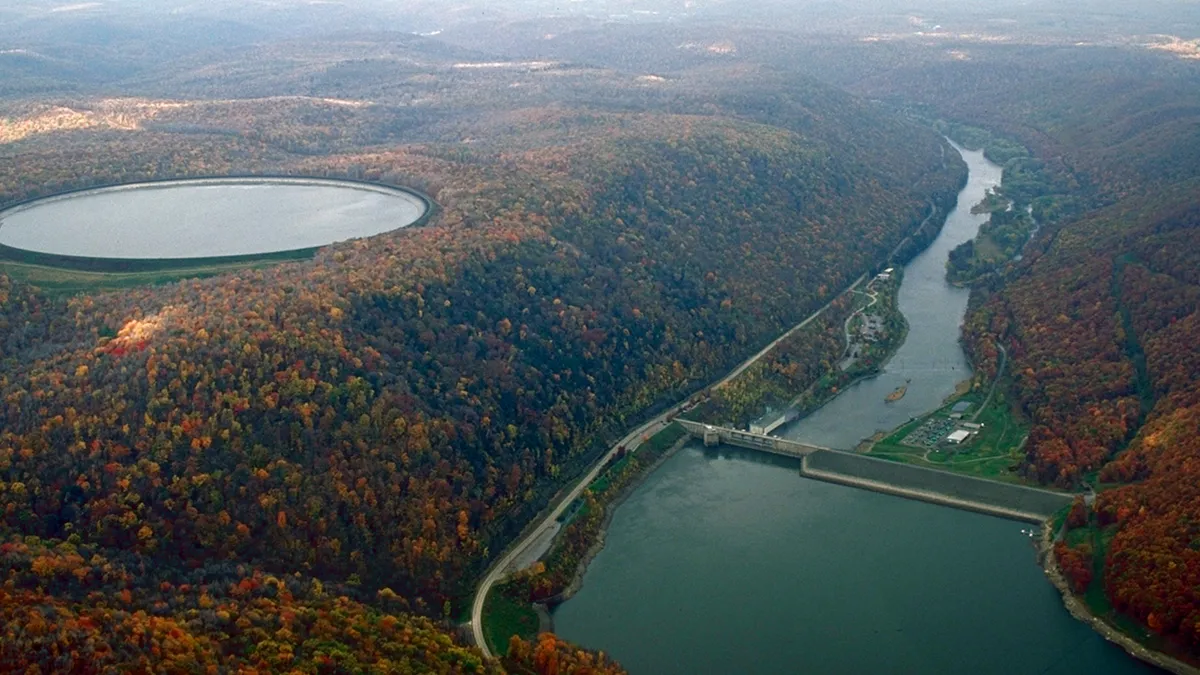Dive Brief:
- The U.S. Energy Information Administration reports a new generation of technologies is beginning to make up that nebulous "other" category of utility-scale generation, with the majority of it pumped hydroelectric storage.
- Pumped storage, batteries, flywheels, and renewable energy fuels other than hydro, wind, and solar accounted for 4% of the United States generating capacity last year.
- Of those resources, hydroelectric storage tends to be the oldest. Almost 90% of the 23 GW of installed capacity was in operation before 1990.
Dive Insight:
That "other" category of utility-scale generation tends to be pumped storage, but EIA's recent capacity series in Today in Energy shows newer technologies are beginning to bubble up. Batteries and flywheels have almost all been added since 2010, the agency said, and so far are geographically constrained.
According to EIA, half of the 540 MW of battery capacity is in California, Illinois, and West Virginia. Almost all of the nation’s 44 MW of utility-scale flywheels are located in New York and Pennsylvania.
At the end of last year there were also utility-scale geothermal generating units totaling 3.7 GW in operation, with the largest group in Northern California, Geysers, supply 943 MW.
EIA also noted that natural gas-fired generators accounted for 42% U.S. capacity last year, and 34% of generation, surpassing coal largely due to cheaper prices.
Between 2010 and 2016, EIA said utility-scale solar installations averaged annual growth of more than 70%.
Those plants, with a capacity of at least 1 MW, now makes up about 2% of all utility-scale electric generating capacity and 0.9% of utility-scale generation. While utility-scale solar energy has operating since the mid-80s, EIA noted that more than 50% of the currently operating capacity came online in the past two years.
Wind generation made up 8% of operating electric capacity last year, which is "more than any other renewable technology, including hydroelectricity," EIA said. "The increase in wind development in the United States over the past decade reflects a combination of improved wind turbine technology, increased access to transmission capacity, state-level renewable portfolio standards, and federal production tax credits and grants."















